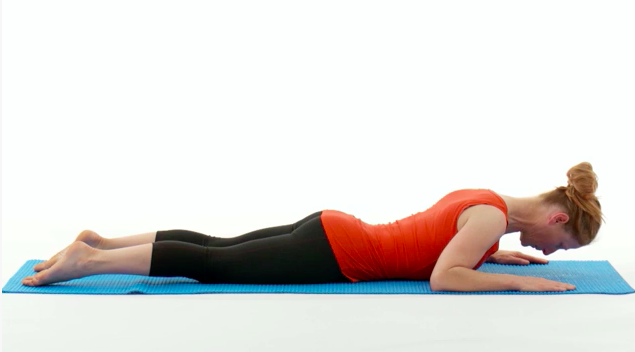We’ve all faced challenges whilst working from home, not least where to set up our workstation and ensuring it suits our bodies. Creaky necks and achy lower backs are common in our clinics these days and, as always, prevention is better than cure.
Guidelines For A Well-Supported Seated Position
Sit with your body close to the desk
Your head and neck should be in a forward facing and midline position (e.g. don’t protrude your chin)
Shoulders should be relaxed and symmetrical, with your elbows close to the sides of your body
The curved lower part of your chair’s backrest should fit into the lumbar curve of your spine; thus, the back is supported by the chair’s backrest
Knees should be just below or level with your hips, with the feet flat on the floor or on a footrest
There should be a gap of 2-3 finger widths between the front of the chair and the back of the knees
The top of your screen should be at, or just below, eye level
What Are The Key Components Of An Ergonomic Workstation?
Adjustable Office Chair
The seat height should be adjustable
The backrest height should be adjusted so that the lumbar support fits snugly against the curve of your low back
The backrest and seat pan tilt should be modified so that your hips are in the same line or slightly above your knees
The seat pan depth adjustment (by sliding the seat) allows you to modify seats if you are shorter or taller
Armrests
These are here to provide forearm support and help with lowering and rising from the chair
Your forearms should rest comfortably on the chairs, to allow your shoulders to relax
The height of these is adjustable
Footrest
Footrests are used if you cannot place your feet flat on the floor
The footrests should have an adjustable slope (10-20°) to allow a comfortable ankle position
Use a non-slip surface underneath it so it does not slide
Computer Monitor
The screen height is important, and the top should be set at eye level or slightly lower - this may help reduce visual fatigue
How far away should the screen be? About one arm length away, or slightly further. This also helps reduce visual fatigue.
If the font or display is too difficult to read, enlarge or adjust it so it can be read more easily
Using External Components
Laptop computers are highly convenient and portable, but they can lead to poor working postures
It is advisable to connect separate components that allow for better posture and can be independently adjusted - e.g. docking stations, external monitors, keyboards, mouse, and laptop stands
What Can I Do To Combat Poor Posture?
Patients with mechanical neck pain (which implies that the source of the pain is the result of something not working properly in the spine and/or its supporting ligaments or muscles) usually have a postural component to their condition.
What Is Cervical Posture Syndrome
Cervical postural syndrome is a condition where a person has adopted poor posture of the neck, which often occurs in combination with poor posture of the shoulders, upper back and middle back.
This is characterised by a protruding chin, and can cause reduced thoracic (middle back) extension, rounded shoulders and short pectoral muscles. Those who present with this condition may complain of either a burning or aching pain across the shoulders and neck, and the pain is usually aggravated by prolonged static postures and usually can be relieved by movement.
Exercises to Combat Poor Cervical Posture
Chin tucks – These help to train the deep neck flexor muscles to address any altered behaviours between the deep and superficial (closer to the surface) muscles.
Begin in a seated position – practice retracting the chin almost like you’re trying to make a double chin. 10 reps 2-3 sets, 2-3 second holds
Make it harder – practice on your stomach completing the chin tuck now against gravity with your hands supported on the ground. 10 reps 2-3 sets, 2-3 second holds
Challenge yourself – complete the same chin tuck on your stomach but without support from your hands. 10 reps 2-3 sets, 2-3 second holds
Upper Trapezius/Levator Scapulae Stretch – Follow the pictures below, holding each stretch 30 seconds on both sides, repeating 2-3x throughout the day as needed.
Pectoral stretch - Place your palm flat on a wall or open doorway and bend your arm at 90°. Slowly step forward so that you feel the stretch in your shoulders and chest. Hold each stretch 30 seconds for each arm, repeating 2-3x throughout the day as needed.
Rhomboids/Middle Traps – Complete 10 reps for 3 sets by choosing one of the examples below:
Rows with a resistance band
Dumbbell raises lying flat on a bench or plinth
Back extensions on Swiss ball
Serratus Anterior – Push Up + Exercise. Push your hands into ground by pushing the shoulder blades away from the ground – 10 reps 3 sets, hold 3 seconds
By incorporating these strengthening and stretching exercises 3 to 4 times a week into your weekly routine and maintaining a well-supported seated posture during the day, you can become proactive in combating the effects of poor posture!
References
- Brukner, P. (2012). Brukner & Khan's clinical sports medicine. North Ryde: McGraw-Hill.
Worksafe.qld.gov.au. 2012. Ergonomic Guide To Computer Based Workstations. [online] Available at: <https: data-preserve-html-node="true"//www.worksafe.qld.gov.au/__data/assets/pdf_file/0006/83067/guide-ergo-comp-workstations.pdf> [Accessed 24 May 2020].
Images via Salaso
- Photo by Tina Witherspoon on Unsplash

















